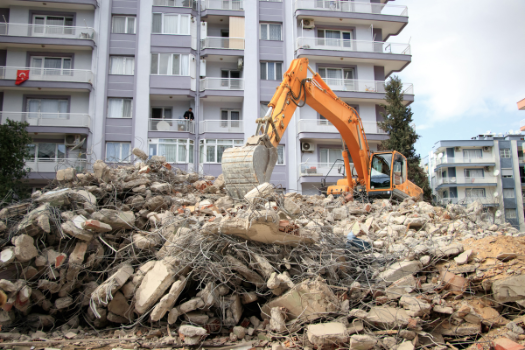
Sustainable Construction Through BIM-Driven Waste Reduction
Introduction
The construction industry has a significant impact on the environment, contributing to high levels of waste and carbon emissions. Addressing these challenges requires a shift toward sustainable practices that reduce harm and support a greener future. Building Information Modeling (BIM) plays a crucial role in this transformation, offering innovative tools that help optimize design and construction processes.
By integrating BIM into projects, teams can plan more efficiently, minimize material waste, and adopt eco-friendly construction methods. These practices not only reduce the environmental footprint but also enhance project efficiency and cost-effectiveness. Sustainability in construction is no longer optional; it is a necessity for responsible building.
BIM empowers the industry to tackle these environmental issues while maintaining high standards of quality and productivity. It represents a critical step forward in creating structures that are not just functional but also sustainable, paving the way for a better future.
Understanding BIM in Construction
Building Information Modeling (BIM) is a powerful digital tool that represents a building’s physical and functional characteristics. It acts as a shared resource, giving everyone involved in a project access to reliable and detailed information. From the initial design stages to demolition, BIM supports decision-making at every step of a building’s lifecycle.

What sets BIM apart is its ability to integrate different aspects of design and construction. Architects, engineers, and contractors can work together on a single platform, making collaboration easier and more effective. This reduces misunderstandings, avoids delays, and ensures smoother workflows.
BIM doesn’t just enhance teamwork; it also improves project outcomes. With better planning and visualization, teams can spot potential issues early and make adjustments before construction begins. By bringing people and processes together, BIM helps deliver projects that are efficient, cost-effective, and built to high standards of quality.
The Environmental Impact of Construction Waste
The construction industry generates a large amount of waste, contributing significantly to global environmental challenges. Traditional construction methods often involve poor planning and material overuse, leading to inefficiencies and unnecessary waste. These practices not only strain natural resources but also increase pollution and harm ecosystems.

Much of the waste comes from excess materials, packaging, and debris that could be avoided with better processes. Landfills often become overwhelmed with construction waste, releasing harmful emissions into the atmosphere. This adds to the industry's already substantial carbon footprint, further accelerating climate change.
Addressing construction waste is critical for achieving sustainability goals. By reducing waste, the industry can conserve resources, cut emissions, and lessen its impact on the environment. Solutions like improved planning, recycling programs, and innovative technologies such as BIM are key to promoting responsible construction practices and building a greener future.
BIM-Driven Strategies for Waste Reduction
Building Information Modeling (BIM) provides powerful strategies to reduce waste in construction projects, making processes more efficient and sustainable. By enabling smarter planning and execution, BIM helps eliminate inefficiencies that often lead to material waste.
Design Optimization is one of BIM’s most impactful strategies. It allows teams to visualize the project in detail before construction begins. This detailed planning helps identify and resolve potential issues early, avoiding costly errors and unnecessary waste. With better foresight, materials can be used efficiently, reducing the risk of excess or incorrect ordering.

Material Efficiency is another advantage of using BIM. The platform provides precise quantity take-offs, ensuring that only the required materials are ordered. This prevents over-purchasing, which often leads to surplus materials being discarded. Accurate material estimates also help lower costs while minimizing the environmental footprint.
BIM also supports Prefabrication and Modular Construction, which are proven methods for waste reduction. By designing components for off-site prefabrication, construction teams can manufacture parts in controlled environments. This reduces material wastage, as off-site manufacturing is more precise and efficient than on-site construction. Once completed, these components are delivered to the site for quick and accurate assembly, minimizing debris and disruption.
These BIM-driven strategies not only help reduce waste but also promote cost efficiency and environmental sustainability. By incorporating BIM into their workflows, construction teams can achieve better outcomes while aligning with the industry's growing focus on green building practices.
Case Studies: Successful Implementation of BIM for Sustainability
Building Information Modeling (BIM) has proven its value in promoting sustainable construction through real-world projects.
One example is a green district that achieved sustainability certification through BIM-driven planning. The tool enabled precise material management and eco-friendly practices, significantly reducing waste and energy use.

Another example involves an infrastructure project designed to generate renewable energy while minimizing environmental impact. BIM was used to optimize resource allocation and enhance collaboration, ensuring efficient construction processes and reduced waste.
These projects highlight BIM's ability to integrate sustainable practices into diverse construction types. By improving efficiency, reducing waste, and enabling smarter decision-making, BIM demonstrates its essential role in achieving sustainability goals in the construction industry.
Challenges and Considerations
While Building Information Modeling (BIM) offers clear advantages, implementing it for waste reduction comes with challenges.
One major hurdle is technological adoption. Transitioning to BIM requires significant investment in software, hardware, and staff training. For smaller firms, these costs can be a barrier, slowing down adoption despite its long-term benefits. Additionally, teams need time to learn and adapt to the new workflows that BIM demands.

Another challenge lies in collaboration and data management. BIM relies on seamless teamwork among architects, engineers, contractors, and other stakeholders. Poor communication or data mismanagement can lead to errors, reducing BIM’s effectiveness. Robust data practices are essential to ensure that the shared information is accurate and accessible throughout the project.
Overcoming these challenges requires commitment to training, investing in technology, and fostering collaboration. With the right strategies, firms can maximize BIM’s potential for reducing waste and promoting sustainability.
Future Outlook: BIM and Sustainable Construction Practices
The future of Building Information Modeling (BIM) in sustainable construction is promising, driven by ongoing technological advancements.
One exciting development is the integration of AI and machine learning with BIM. These technologies can enhance predictive analytics, helping teams forecast material needs and optimize waste management. By identifying potential inefficiencies early, AI-powered BIM enables more proactive and sustainable project planning.

BIM’s ability to perform lifecycle assessments is another game-changer. It provides a detailed view of a building’s entire lifespan, from design to demolition. This helps stakeholders evaluate the environmental impact at every stage, leading to smarter, long-term decision-making. Lifecycle modeling also supports energy-efficient designs and resource conservation.
As technology evolves, BIM will become even more powerful in advancing sustainability. Its integration with emerging tools will help construction teams reduce waste, cut costs, and deliver eco-friendly projects, aligning with global efforts toward a greener future.
Conclusion
Building Information Modeling (BIM) is transforming the way the construction industry approaches sustainability. Its ability to enable precise planning, optimize material use, and enhance collaboration makes it a powerful tool for reducing waste and protecting the environment. By adopting BIM-driven solutions, construction teams can meet sustainability goals while improving project efficiency and outcomes. As the industry evolves, BIM will play a vital role in addressing environmental challenges and fostering greener building practices. Embracing BIM is not just a step forward—it's a commitment to a more sustainable future for construction and the planet.